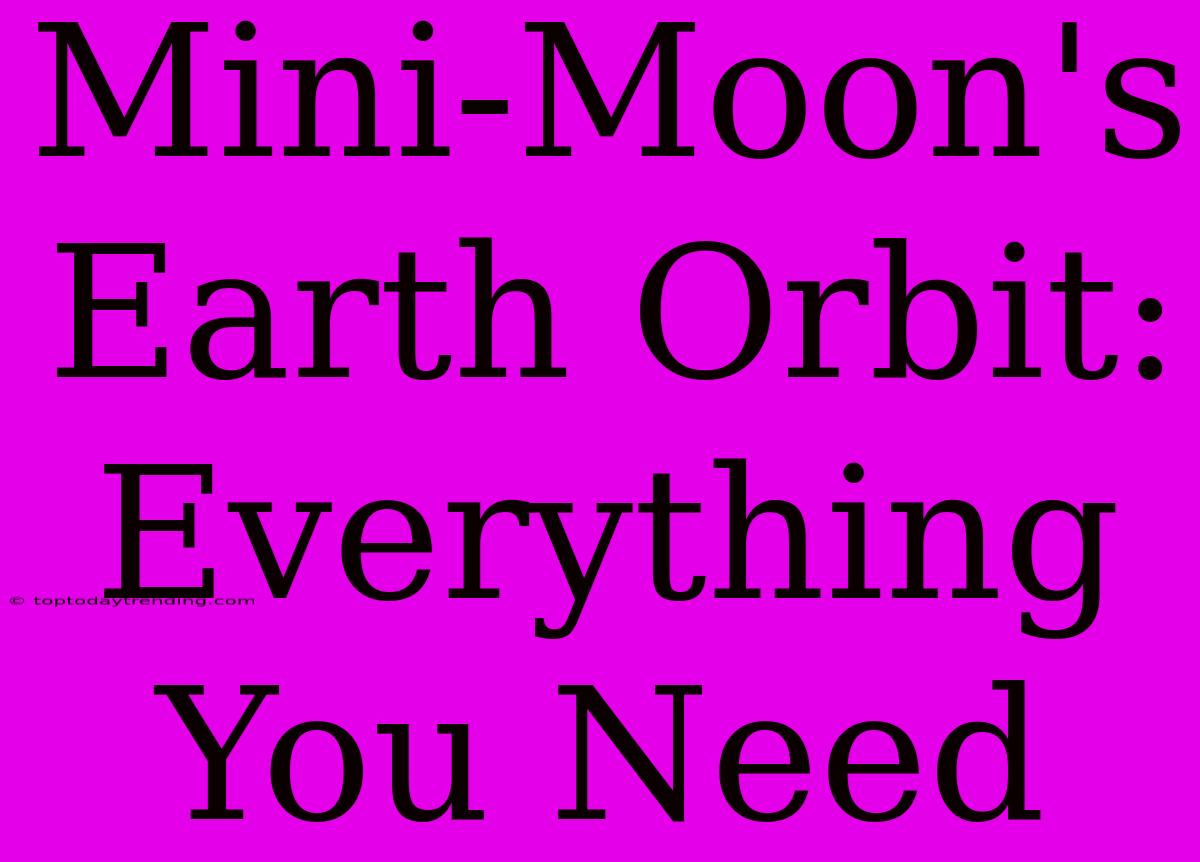Mini-Moon's Earth Orbit: Everything You Need to Know
The idea of a mini-moon orbiting our planet might sound like something out of science fiction, but it's actually a real phenomenon. While our natural satellite, the Moon, is a celestial giant, there are smaller objects that occasionally get captured by Earth's gravity, becoming temporary mini-moons.
This article delves into the fascinating world of mini-moons, explaining their orbits, duration, and potential impacts.
What are Mini-Moons?
Mini-moons are small asteroids or other celestial bodies that get temporarily captured by Earth's gravity. They are typically much smaller than our Moon, ranging in size from a few meters to several hundred meters across.
What are they made of?
Mini-moons are often composed of rock, metal, or a combination of both. They can be remnants of comets, asteroids, or even debris from past collisions.
How Long Do They Orbit Earth?
The length of time a mini-moon orbits Earth can vary significantly, depending on its trajectory and the strength of Earth's gravitational pull. Some mini-moons might only stay for a few days or weeks, while others could remain in orbit for months or even years.
The Orbital Path:
The orbital path of a mini-moon around Earth is typically elliptical, meaning it's not a perfect circle. This elliptical path means the mini-moon's distance from Earth fluctuates throughout its orbit.
Discovery and Identification:
Detecting mini-moons is a challenging task, as they are often small and faint. However, advancements in ground-based telescopes and space-based observatories have made the identification of these temporary celestial companions more frequent.
How are they found?
- Telescope Observations: Dedicated telescopes like the Pan-STARRS survey constantly scan the night sky for moving objects.
- Spacecraft Data: Satellites like the NEOWISE mission use infrared sensors to identify and track near-Earth objects, including potential mini-moons.
Potential Impacts:
While the idea of a mini-moon crashing into Earth might be alarming, the likelihood of this happening is very low. These objects are relatively small, and their orbits are often unstable, making them more likely to be ejected back into space before a collision.
Are Mini-Moons a Threat?
Mini-moons are generally not considered a major threat to Earth. They are small, and their orbits are often unstable. However, the possibility of a collision cannot be ruled out entirely.
Future Research:
The study of mini-moons is a relatively new field, and there is much we don't know about them. Scientists are actively researching these objects to understand their origins, their orbital dynamics, and their potential impacts on Earth.
The Bottom Line
Mini-moons are fascinating objects that offer a glimpse into the diverse and dynamic environment surrounding our planet. While they may be temporary companions, their presence adds another layer of complexity and intrigue to our understanding of the solar system. Future research will undoubtedly shed more light on these celestial visitors and their impact on Earth.

